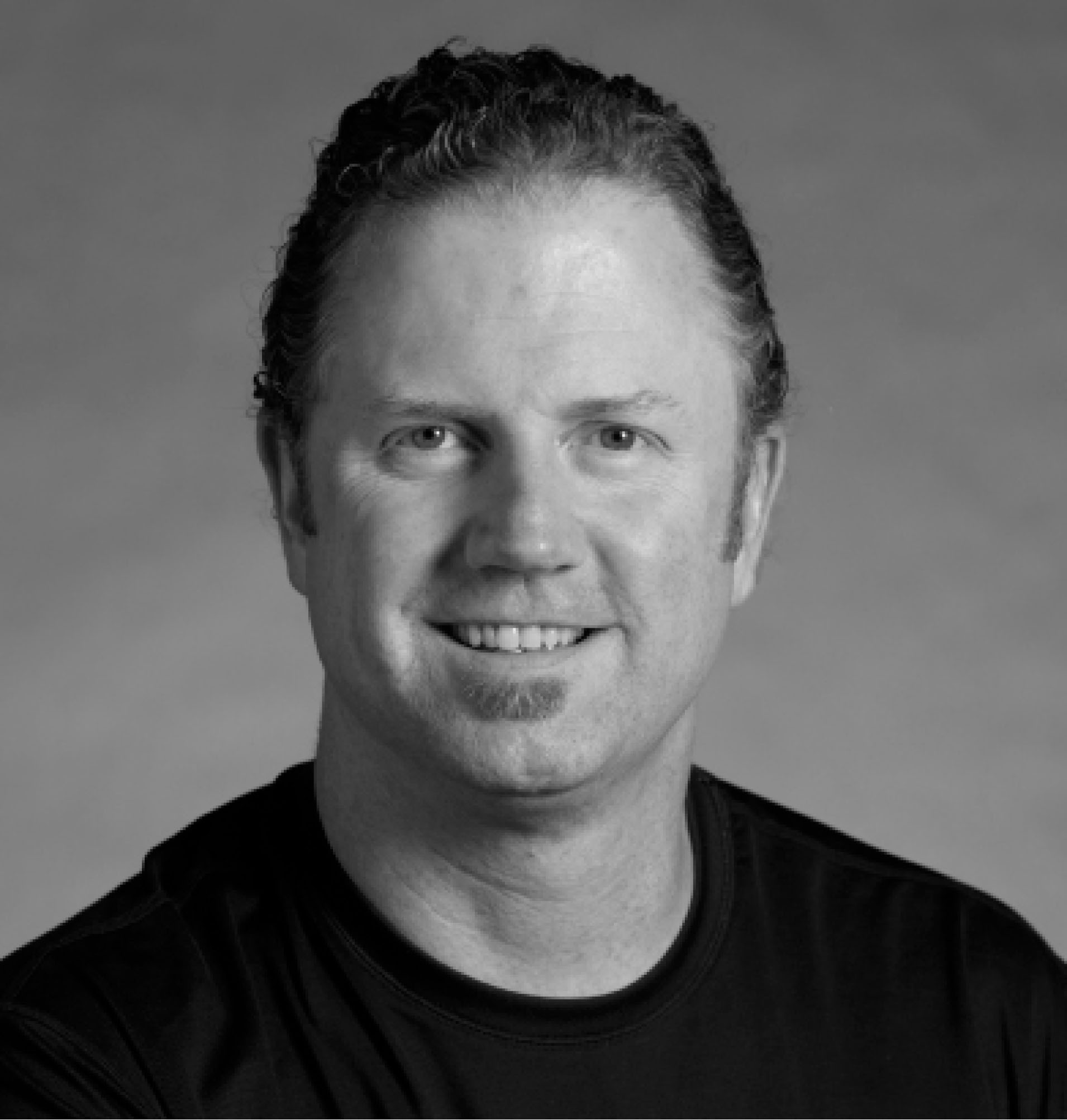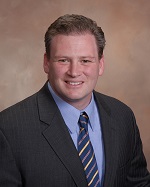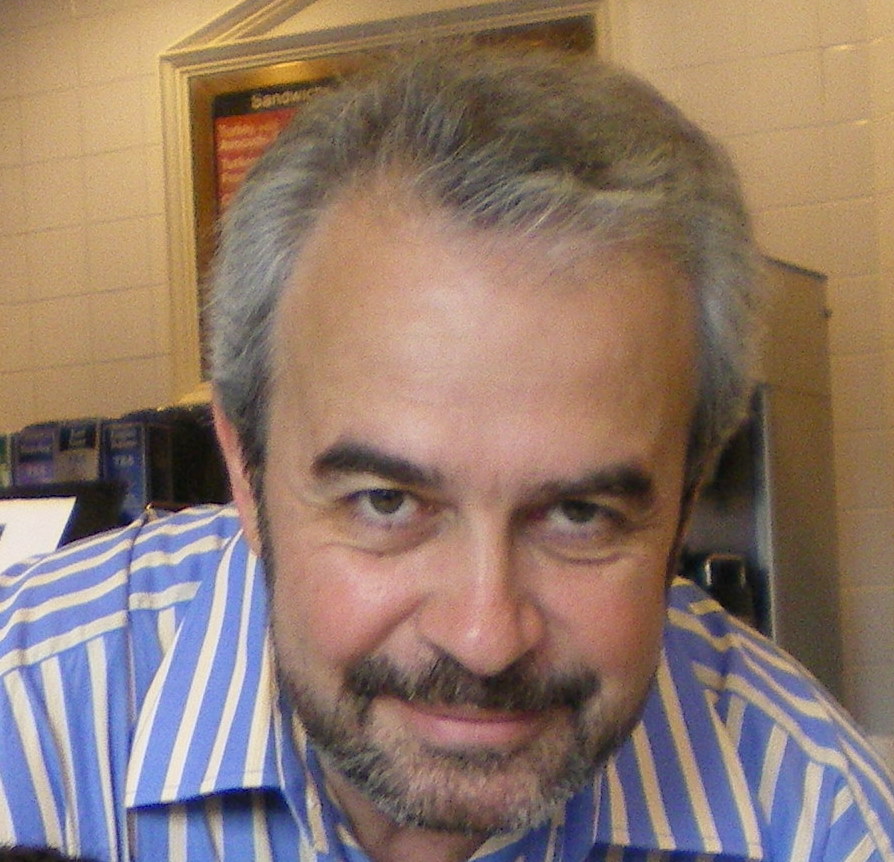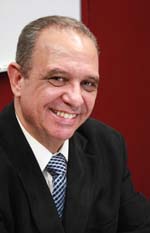Stop learning to innovate through trial and error
Learn TRIZ, a methodology developed by Genrick Altshuller for solving problems more efficiently and intuitively.
TRIZ Technology for Innovation
Isak Bukhman (TRIZ Solutions LLC)
Abstract
1.TRIZ is a science of system development based on laws of systems evolution and the best practices of thousands of developers and scientists (Figure 1)
Figure 1. Structure of TRIZ
2.TRIZ Technology for Innovation is the process of using all parts of TRIZ in combination with other proven design development methods and best practices of effective project teams for system development and problem solving.
3.TRIZ Technology for Innovation is applying through TRIZ Innovation Roadmaps for project creation and problem solving (Figure 2).
4.TRIZ Innovation Roadmap for Project Creation and Problem Solving is an individual combination of parts of TRIZ, along with other proven methods and best practices of effective project teams, applied in most effective sequence for the achievement of best results for any given project or problem.
5.TRIZ Innovation Roadmap is a complete set of tools for the conceptual stage of product/process/service design.
Figure 2. The TRIZ Innovation Roadmap (most complete variant) for projects creation and problem solving contains three major parts: Part 1: system analysis and problem statement, Part 2: problem solving and concepts development, and Part 3: concepts scenario creation

As their chief methodologist, Isak spent almost ten years at Invention Machine Corporation (IMC) while the company established its global reputation. He now works as an independent consultant and owner of TRIZ Solutions, LLC. TRIZ Solutions LLC is a consulting company and offers the complete array of TRIZ Technology for Innovation to companies by using system of trainings, projects facilitation, preparation of consultants and support in the creation of Centers of Innovation.
During recent years, Isak has been active delivering TRIZ training workshops and guiding the development of more than 100 innovation projects in 16 countries (USA, UK, Spain, Germany, Netherlands, Russia, Latvia, Bulgaria, Israel, People’s Republic of China, Hong Kong, Japan, South Korea, India, Taiwan, Singapore) for more than 40 leading global corporations, including Eaton, American Axle & Manufacturing, Johnson Controls, BYD, Bobcat, Shell, Masco-Behr, Baker Hughes, Chemtura, Henkel, Samsung, Intel, Microsoft, NXP, Johnson-Johnson, Hospira, Mattel/Fisher-Price, Kaifa, GAF, Clorox, Corning, Compal, Epistar, General Dynamics Land Systems, Whirlpool, Alcon, DePuyOrthopaedics, Flowserve, Savannah River Site, Steris, Biomerieux, Medtronic, Philips, Delphi, POSCO, Xinetics, BaoSteel and A.O.Smith Corporation
Isak’s work has also included the delivery of numerous basic and advanced training seminars (some together with Genrich Altshuller), education and training of thousands of managers, engineers and researchers in TRIZ/Value Methodology, and – closest to his heart – seven years of child and adolescent creativity (TRIZ) education in his native Latvia.
This email address is being protected from spambots. You need JavaScript enabled to view it.
https://www.amazon.com/author/isakbukhman
- Details
- Category: Abstracts
Using the TRIZ System Operator to compare traditional product developmentto crowdsourced product development
Timothy Brewera, Ellen Dombb
aTimothy Brewer Design, 1740 Raymond Hill Road, #3, South Pasadena, CA 91030, USA
bPQR Group, 190 N. Mountain Ave., Upland CA 91786 USA
Abstract
The emergence of crowdsourced design companies and the crowdsource business model have made major changes in the way that new business ideas are launched. Inventors’ risks are reduced dramatically, since they learn very quickly whether there are any customers who are interested enough in their product to put time and energy (and in some cases money) into helping to create and refine the new product. We will focus on the Quirky model, in which inventors' risks are also reduced by the professional staff's experience with engineering, manufacturing, distribution, and marketing, allowing inventors to focus on ideas and design issues. The community of interest is invited to critique the idea submissions, and contribute ideas for improvement, which are then assigned a share of the eventual revenue based on the value attributed to the improvements. In this paper we will use the TRIZ ‘system operator’ tool to compare traditional product development to crowdsourced product development and to forecast a radical potential future for crowdsourced product development companies.
Tim Brewer is a product development professional and industrial designer. Tim has sixteen years of product plann ing and program management of both consumer software and hardware product development products at Microsoft and RealNetworks. He holds 14 utility patents including three patents on the ubiquitous mouse scroll wheel.
ing and program management of both consumer software and hardware product development products at Microsoft and RealNetworks. He holds 14 utility patents including three patents on the ubiquitous mouse scroll wheel.
Tim is a graduate of the Master of Science in Industrial Design program at Art Center College of Design in Pasadena, CA, in addition to undergraduate degrees in Computer Science and Industrial Design Technology.
From his masters studies, Tim developed a new method of teaching and applying TRIZ to industrial design. This past summer, as an adjunct faculty member of the Art Institute of Seattle, Tim successfully taught 22 undergraduate industrial design students this new method for creating "most advanced yet acceptable" (Raymond Loewy) TRIZ inspired product designs.
Most recently, Tim was named a Quirky Inventor for the TRIZ inspired Smart Cordless Drill concept (quirky.com/invent/647255) he successfully submitted to Quirky.com, a crowdsourced product design company.
 Ellen Domb is the founder of the PQR Group and founding editor of The TRIZ Journal. TRIZ is Dr. Domb's 6th career: she has been a physics professor, an aerospace engineer, an engineering manager, a product line general manager, and a strategic planning/quality improvement consultant. In 2005, she was named by Quality Digest Magazine as a leading voice for the future, citing the integration of TRIZ for innovation in quality improvement and quality planning systems.
Ellen Domb is the founder of the PQR Group and founding editor of The TRIZ Journal. TRIZ is Dr. Domb's 6th career: she has been a physics professor, an aerospace engineer, an engineering manager, a product line general manager, and a strategic planning/quality improvement consultant. In 2005, she was named by Quality Digest Magazine as a leading voice for the future, citing the integration of TRIZ for innovation in quality improvement and quality planning systems.
Ellen's client work, books, and articles are aimed at making it easy for people to learn TRIZ and to incorporate new thinking methods into their organizations. Clients include the Global 500--Dow Chemical, Hewlett-Packard, 3M, and others--and entrepreneurial companies with 3-50 employees. She is the developer of the methods for integrating TRIZ with the Hoshin Kanri methods of strategy deployment, and co-author of key books in both areas: Beyond Strategic Vision (with M. Cowley) and Simplified TRIZ (with K. Rantanen).
- Details
- Category: Abstracts
The Relationship of TRIZ Principles to Deformity Correction in Surgery
Robert Joseph, DPM, PhD
Charcot neuroarthropathy is a devastating and crippling condition that results in foot and ankle deformities which cause wounds. At one time, amputation was the primary treatment of severe Charcot deformities however advances in surgical instrumentation and surgeon technique now enable reconstruction of deformities that previously required amputation. The pathway of innovation in Charcot surgery is consistent with applications of TRIZ principles however formal adoption of systematic processes of innovation in surgery is uncommon.
Several challenges exist to surgeon adoption of systematic methods of innovation and include 1) difficulty applying engineering based systems to clinically relevant physiology 2) contextual differences between systematic processes of innovation and impromptu innovation that most commonly occurs in surgery when complications arise. This presentation will include a surgical case series demonstrating how select TRIZ principles apply to advancements in Charcot surgery. Recommendations will be made on how TRIZ concepts can be contextually framed to facilitate physician oriented problem solving in a patient care environment. Conceptual relationships between several TRIZ principles and clinical physiology will be highlighted through case studies.
BIOGRAPHY:

Robert Joseph D.P.M., Ph.D., is a practicing board certified foot and ankle. He is a clinical trial investigator with the Providence Center for Research and member of the editorial board of the Journal of Foot and Ankle Surgery. His specific research interests include healthcare innovation and the development of multidisciplinary research teams.
- Details
- Category: Abstracts
From Strategy to Real Business Impact
Victor Fey, John Cooke
The task of turning business objectives into successful new products is one of the biggest challenges facing any manufacturing company. The innovation process behind this transformation involves several key steps: identification of high-potential opportunities, conversion of these opportunities into functional product requirements, concept generation, selection and implementation. TRIZ can effectively support and boost each of these activities. A systematic application of various TRIZ tools (as well as some other productivity-enhancement methods) to product innovation is illustrated by a story of the development of FlaviaTM – a unique and breakthrough coffee-brewing system that delivers coffee shop quality across a complete cafe menu.
 Victor Fey has over 28 years’ experience in TRIZ research, training and application. TRIZ Master and Adjunct Professor of Mechanical Engineering at Wayne State University, he has successfully consulted for many Global 500 companies and conducted numerous training courses for industry and academia. His latest books include, Effective Innovation: The Development of Winning Technologies, published by ASME Press in 2004, and Innovation on Demand: New Product Development Using TRIZ, released by Cambridge University Press in 2005. He is Chairman of the Education Committee of the Altshuller Institute and Member of the R&D Council of the International TRIZ Association
Victor Fey has over 28 years’ experience in TRIZ research, training and application. TRIZ Master and Adjunct Professor of Mechanical Engineering at Wayne State University, he has successfully consulted for many Global 500 companies and conducted numerous training courses for industry and academia. His latest books include, Effective Innovation: The Development of Winning Technologies, published by ASME Press in 2004, and Innovation on Demand: New Product Development Using TRIZ, released by Cambridge University Press in 2005. He is Chairman of the Education Committee of the Altshuller Institute and Member of the R&D Council of the International TRIZ Association
 John Cooke, founder of CoCatalyst Ltd., is a seasoned innovation expert with over 20 years’ experience working in senior roles for Mars Inc. During his time at Mars, John was responsible for introducing developments which helped to make the FLAVIA brand one of the fastest growing Mars brands. Since leaving Mars, John has trained and consulted across many industrial sectors, including Wind Energy, Medical Devices, Food, Paper, Rail, Automotive and Consumer Products. John has in-depth expertise in a number of key innovation practices, such as technology scouting, Open Innovation and TRIZ, and a strong track record of innovation success with a portfolio of over 50 international patents. John is particularly interested in developing powerful systematic innovation tools, such as TRIZ, and in promoting effective innovation practices.
John Cooke, founder of CoCatalyst Ltd., is a seasoned innovation expert with over 20 years’ experience working in senior roles for Mars Inc. During his time at Mars, John was responsible for introducing developments which helped to make the FLAVIA brand one of the fastest growing Mars brands. Since leaving Mars, John has trained and consulted across many industrial sectors, including Wind Energy, Medical Devices, Food, Paper, Rail, Automotive and Consumer Products. John has in-depth expertise in a number of key innovation practices, such as technology scouting, Open Innovation and TRIZ, and a strong track record of innovation success with a portfolio of over 50 international patents. John is particularly interested in developing powerful systematic innovation tools, such as TRIZ, and in promoting effective innovation practices.
- Details
- Category: Abstracts
Intel Corp. Wireless Power System Improvement
- Su-Field Analysis Application
This case study represents a real world application of TRIZ in the personal electronics space. In 2010 Intel Labs in Seattle Washington requested consultation for the purpose of improving the effectiveness of their operational wireless power system. This case study will discuss the background to, and the boundary conditions of, the study as well as the problem modeling and solution generation tools utilized in the project. More specifically, the case study will show how Su-Field modeling can be extracted from a system Functional Model and demonstrated how the resulting Standard Inventive Solution application can created a term structured roadmap of solution concepts.
Biography:
 David Conley received his BS of Nuclear Engineering from Texas A&M University and his Masters of Finance from the University of New Mexico. As an US Air Force Officer he performed plasma physics and space nuclear propulsion research and served at Los Alamos and Brookhaven National Laboratories and on NASA’s Nuclear Safety Review Panel. His private sector experience includes Johnson and Johnson, Philips Semiconductor and Intel Corporation. Employed at Intel Corporation from 1995 until 2012 David held a variety of engineering and management roles including the Chair of the Technology Manufacturing Group’s Theory of Inventive Problem Solving (TRIZ) program and was also the President of Intel’s International TRIZ Association Corporate Chapter. David is now a private consultant in the discipline of systematic innovation providing training and project support for clients worldwide. Certified as a Level 4 TRIZ Specialist by the International TRIZ Association (MATRIZ), David’s contributions to the field of systematic innovation include: technical, business and computational system development, improvement and problem solving, methodology development and training, program integration and serving on the Executive Board and the Certification Committee of the US based Altshuller Institute for TRIZ Studies. Further, he has executed TRIZ analyses and projects across a wide variety of industries and disciplines and has supported the execution of hundreds of student problems associated with his TRIZ training sessions. David has broad international business and engineering experience and lives in New Mexico, USA with his wife and three sons.
David Conley received his BS of Nuclear Engineering from Texas A&M University and his Masters of Finance from the University of New Mexico. As an US Air Force Officer he performed plasma physics and space nuclear propulsion research and served at Los Alamos and Brookhaven National Laboratories and on NASA’s Nuclear Safety Review Panel. His private sector experience includes Johnson and Johnson, Philips Semiconductor and Intel Corporation. Employed at Intel Corporation from 1995 until 2012 David held a variety of engineering and management roles including the Chair of the Technology Manufacturing Group’s Theory of Inventive Problem Solving (TRIZ) program and was also the President of Intel’s International TRIZ Association Corporate Chapter. David is now a private consultant in the discipline of systematic innovation providing training and project support for clients worldwide. Certified as a Level 4 TRIZ Specialist by the International TRIZ Association (MATRIZ), David’s contributions to the field of systematic innovation include: technical, business and computational system development, improvement and problem solving, methodology development and training, program integration and serving on the Executive Board and the Certification Committee of the US based Altshuller Institute for TRIZ Studies. Further, he has executed TRIZ analyses and projects across a wide variety of industries and disciplines and has supported the execution of hundreds of student problems associated with his TRIZ training sessions. David has broad international business and engineering experience and lives in New Mexico, USA with his wife and three sons.
- Details
- Category: Abstracts
Research on the future of TRIZ:
Steps toward the Integration of TRIZ, BOS and Design Thinking
Dr. Noel León, ITESM, IM&ST, AMETRIZ México
Everything has changed, is changing, and will continue to change. At the Mexican TRIZ Association AMETRIZ, we are looking for ways of hybridizing TRIZ with other innovation and business tools and strategies as Blue Ocean Strategy and Design Thinking considering contributing to improve the effectiveness of the innovation process.
Blue Ocean Strategy is a business strategy book that illustrates what the authors believe is the best organizational strategy to generate growth and profits by suggesting that an organization should create new demand in an uncontested market space, or a "Blue Ocean", rather than compete head-to-head with other suppliers in an existing industry.
Applied Design Thinking is considered Strategic Innovation with the ability to combine creativity in the generation of conceptions and resolutions, empathy for the perception of a problem, and wisdom to analyze and fit solutions to the context. The basic ideas of our ongoing research are presented with the aim of contributing to the evolution of TRIZ as a structured way of inventive problem solving that may impact in enhancing the effectiveness of innovation and business strategies.
Perhaps a new concept “Systematic Design Thinking” may be emerging?
Noel León - Resume
Dr. Noel León holds a degree in mechanical engineering for the design of agricultural machines, as well as a PhD in mechanical engineering (summa cum laude), both from the Dresden University of Technology, in Germany
He specializes in Product Design, Design Theory, and Computer Aided Engineering. He is active in the fields of multiphysics simulation, evolutionary algorithms, Quality Function Deployment, Blue Ocean Strategy and the Theory of Inventive Problem Solving (TRIZ). He is Emeritus Professor at Monterrey Tec in Mexico where he teaches Product Design and Computer Aided Engineering at the Master Program Manufacturing Systems.
Some of his recent research has involved the innovation and development of systems for solar thermal energy as vacuum solar collectors, thermal batteries with phase changing materials, Fresnel lens for solar tracking with minimum costs, hybrid vehicles with Stirling engines and thermal batteries, among others. He holds 15 issued patents and has applied for 22 more.
Some of the awards and prizes received:
- Annual technical scientific merit award: for being the most prominent in the scientific work in 1988, 1990 at the technical Superior Institute of Holguin, Granted by the Minister of Higher Education of the Republic Cuba.
- Award to the teaching work and research at ITESM, 1999
- Award to the teaching work and research at ITESM, 2004
- Romulo Garza Prize Professor inventor by Patents and Licensing of the ITESM system, 2013
- INC Monterrey award in November 2013 for the Mexican Professor with the biggest number of applied and issued patents
He has delivered courses in QFD and TRIZ for more than 100 enterprises in Mexico and other Latin American and European Countries as Columbia, Chile, Peru, Panama, Germany, and France.
He is member of the Mexican National System of Researchers, member of IFIP WG5.4 Computer Aided Innovation and Honorary Chairman of the Mexican TRIZ Association.
- Details
- Category: Abstracts
Larry R. Smith “graduated” (retired) from Ford in 2005 where he was quality coach of the Ford Motor Company's Heritage team, a team charged with revitalizing the Ford Rouge manufacturing complex. Larry's career emphasis has been in quality engineering and product development. He was instrumental in initiating a six sigma effort at Ford Motor Company and acted as deployment champion for the Superduty Truck Platform, whose six sigma projects saved $49 million in the first year of operation. He was also champion of a volunteer Ford Environmental Idea Process Team, focused on developing ideas related to design and manufacture of vehicles whose use improves conditions for human beings and the environment. Larry has held a variety of quality management positions in his 27 years at Ford, primarily in Vehicle Operations, North American Truck, Powertrain Operations, and Casting Operations.
Since Ford, Larry has consulted and conducted training on quality and innovation methods with his own company, The Quality Smith, and for Ideation, GOAL/QPC, Global Productivity Solutions and the Juran Institute. He has worked with corporations such as Abbott, Delphi, Unilever, Raytheon, Apple, Bosch, organizations such as the American Society for Quality, the Public Health Foundation, and the European Organization for Quality, and consulting firms in China, India, and Malaysia.
A fellow of the American Society for Quality and elected national director from 2004-2006, Smith is a past president of the Altshuller Institute for TRIZ Studies and has been involved in numerous applications of TRIZ since 1993. A member of the Board of Directors of GOAL/QPC from 1994 to 2007, Larry is also a past president of the Detroit Chapter of ASM International.
- Details
- Category: Abstracts










